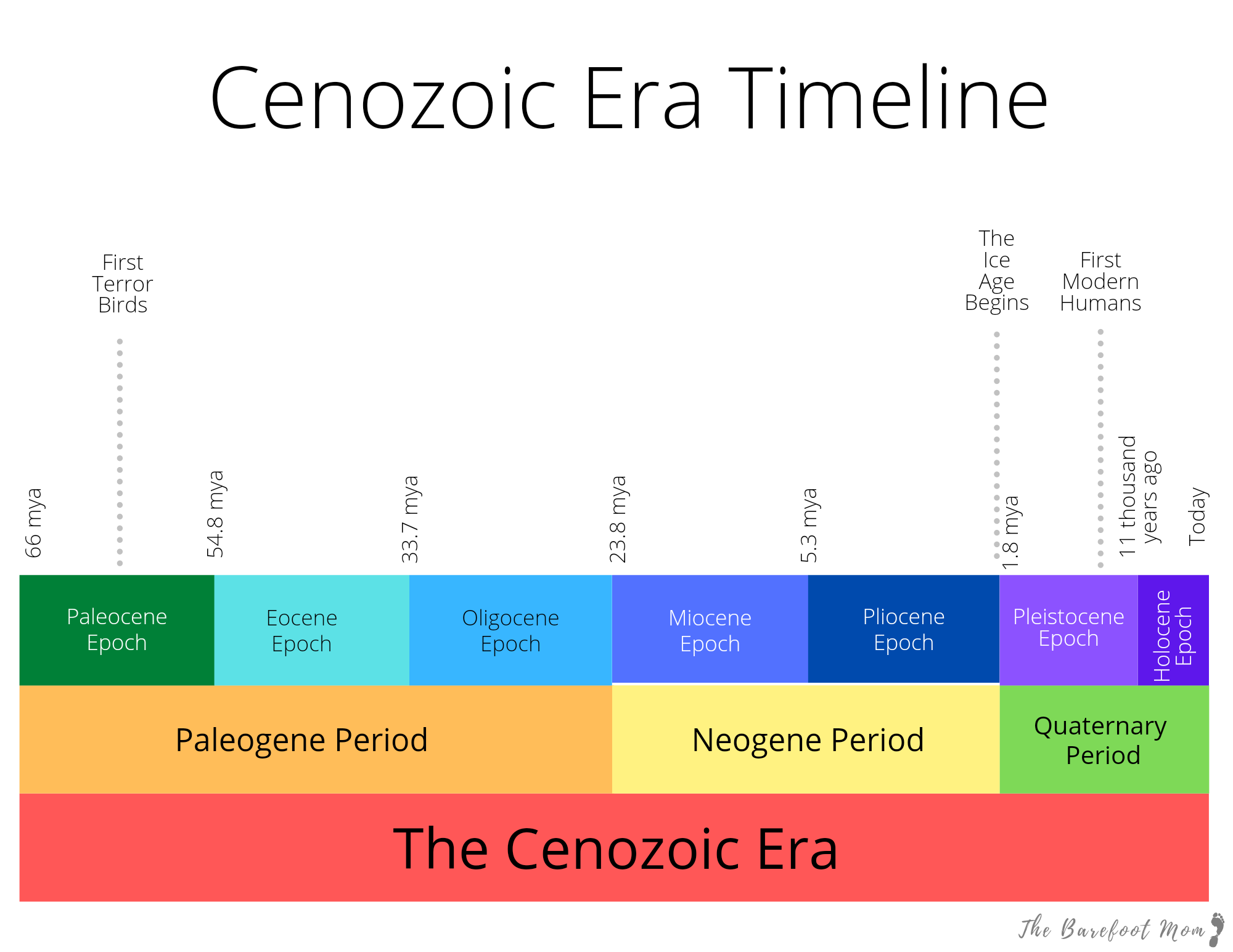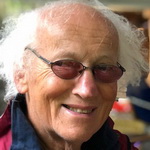In Shanti’s new series, Humans Are Still Young, we travel through the Paleocene, Eocene, Oligocene, Miocene and Pliocene Epochs (Part 3)

The Cenozoic Era is subdivided into six major epochs… and a bonus, the Holocene Epoch!
The first one is called the Paleocene Epoch. It starts with the mass extinction event at the end of the Cretaceous. This is a time marked by the demise of non-avian dinosaurs, giant marine reptiles and much other fauna and flora. Smaller mammals as well as birds, reptiles, amphibians and insects survive the mass extinction. They diversify and spread throughout the world.
Next is the Eocene Epoch, the dawn of new life. In the Early Eocene, the Earth is a greenhouse world, a world that is essentially ice-free. Because of this, the maximum sea level is 150 meters higher than current levels. At the top of the food chains are huge birds, such as Gastornis. It is the only time in recorded history that birds rule the world. Later in the Eocene ice begins to reappear at the poles and the Eocene-Oligocene transition is the period of time where the Antarctic ice sheet begins to expand rapidly. The lower temperatures cause a shift towards increasingly open savannah-like vegetation, with a corresponding reduction in forests.
Next is the Oligocene Epoch. On land, mammals begin to dominate. They continue to grow larger and larger – like the first elephants with trunks, camels and early horses – in good harmony with the expansion of grasslands and prairies. The continents continue to drift toward their present positions. Antarctica becomes more isolated and finally develops an ice cap. Mountain building in western North America continues and the Alps start to rise in Europe, as the African plate continues to push north into the Eurasian plate… as it is still doing!
Next is the Miocene Epoch. The overall pattern of biological change for the Miocene is one of expanding open vegetation systems, such as deserts, tundra and grasslands, at the expense of diminishing closed vegetation, such as forests. More open landscapes allow animals to grow to larger sizes than they had earlier. Grasslands begin to spread, followed by an evolutionary radiation of open-habitat herbivores and carnivores, like easily recognizable dogs, bears, horses, beavers, deer and camels. By the epoch’s end, all or almost all modern bird families are believed to have been present. The first hominins (homo and pan) appear in Africa at the very end of the Miocene. The ancestors of humans have split away from the ancestors of the chimpanzees to follow their own evolutionary path.
We are on our way, we have always been… as all life forms may ‘dream’!
By 8 million years ago temperatures drop sharply once again. The Antarctic ice sheet is already approaching its present-day size and thickness. Greenland begins to have large glaciers, although the climate for the most part remains warm enough to support forests there well into the next period, the Pliocene.
The Pliocene Epoch is a time of global cooling after the warmer Miocene. The Pliocene seas are alive with sea cows, seals and sea lions. Alligators and crocodiles die out in Europe as the climate cools. This cooling and drying of the global environment may contribute to the enormous spread of grasslands and savannas during this period. Continents continue to drift, moving from positions possibly as far as 250 km from their present locations to positions only 70 km from their current locations. Africa’s collision with Europe forms the Mediterranean Sea, cutting off the remnants of the previous Tethys Ocean. The Panamanian land-bridge between North and South America appears during the Pliocene, allowing migrations of plants and animals into new habitats.
During the Pliocene the tectonic plates of India and Asia also collide, which forms the Himalayas. Of even greater impact is the accumulation of ice at the poles, which will lead to the extinction of most species living there, as well as to the advance of the glaciers and ice ages of the Late Pliocene and the following Pleistocene. Large polar ice caps start to develop and Antarctica becomes the frozen continent that it is today.
To be continued…
Related articles on Osho News
- All articles in the series, Humans Are Still Young
- All articles in the series, At Home in the Universe





Comments are closed.